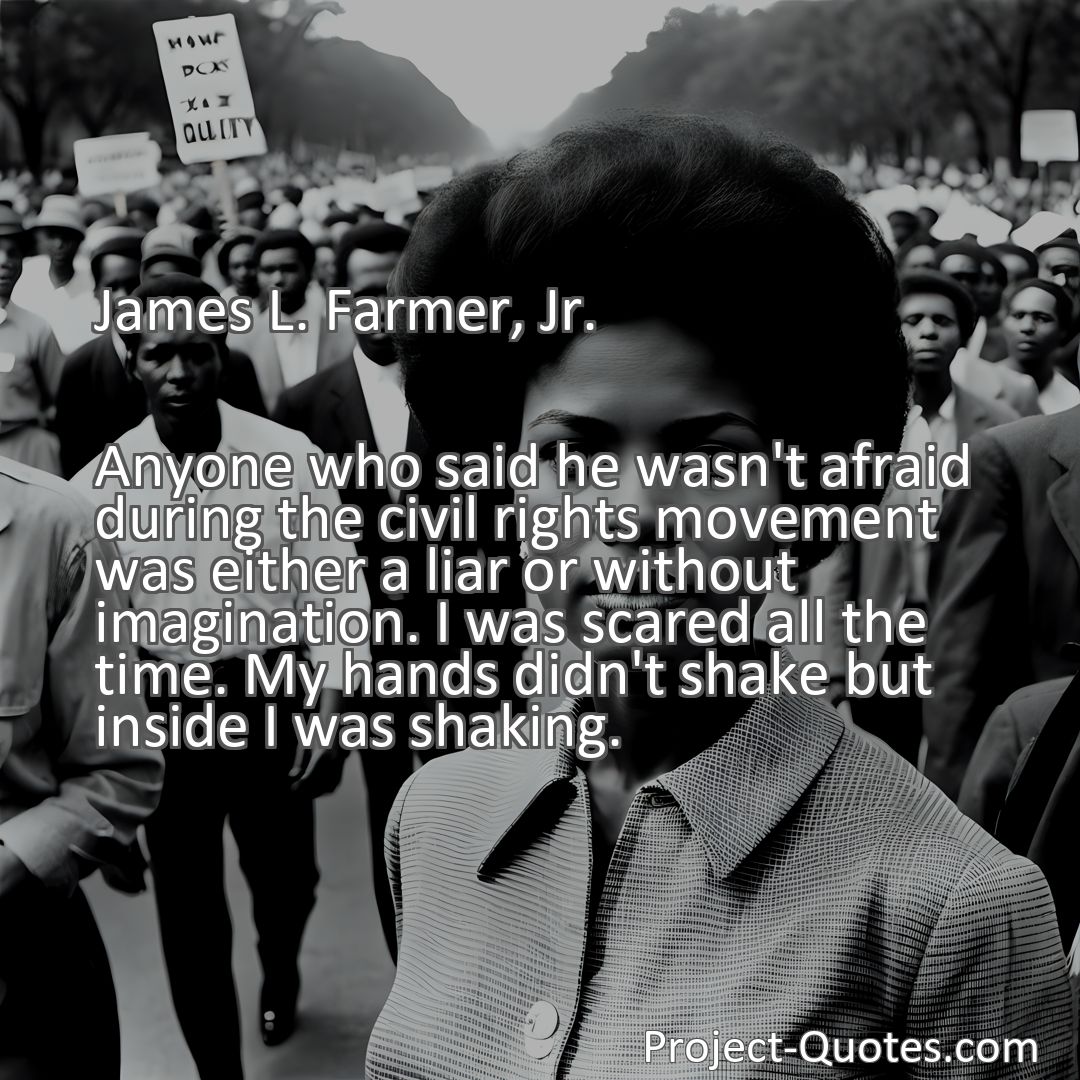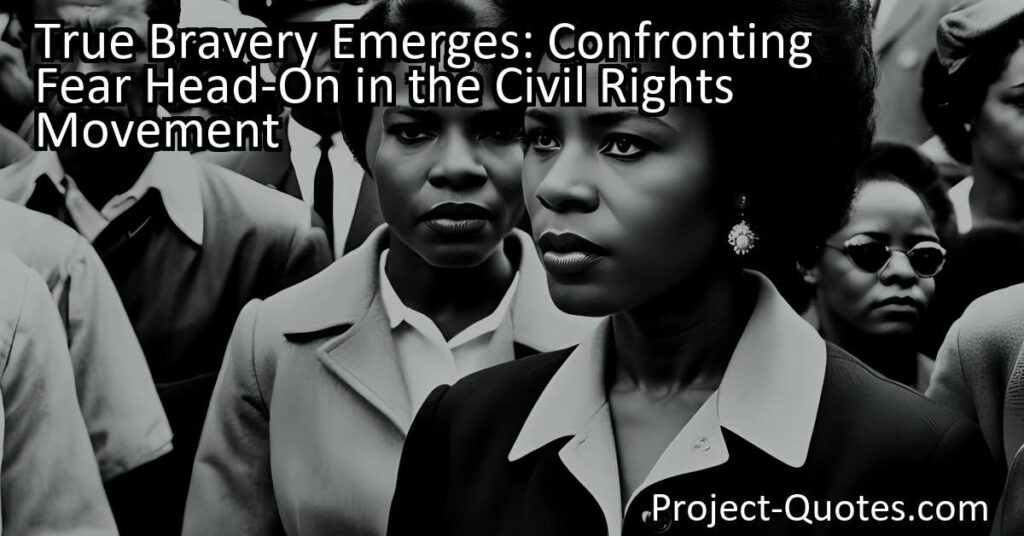Anyone who said he wasn’t afraid during the civil rights movement was either a liar or without imagination. I was scared all the time. My hands didn’t shake but inside I was shaking.
James L. Farmer, Jr.
True bravery emerges when individuals confront fear head-on, as exemplified by the courageous activists of the civil rights movement. In a time marked by systemic racism and discrimination, these brave individuals risked everything to fight for equality and justice. Despite their fears, they persevered, inspiring us to acknowledge and confront our own fears in the pursuit of a better future.
Table of Contents
- 1 Anyone who said he wasn’t afraid during the civil rights movement was either a liar or without imagination. I was scared all the time. My hands didn’t shake but inside I was shaking.
- 2 James L. Farmer, Jr.
- 3 Meaning of Quote – Anyone who said he wasn’t afraid during the civil rights movement was either a liar or without imagination. I was scared all the time. My hands didn’t shake but inside I was shaking.
- 4 Freely Shareable Quote Image
- 5 Related
Meaning of Quote – Anyone who said he wasn’t afraid during the civil rights movement was either a liar or without imagination. I was scared all the time. My hands didn’t shake but inside I was shaking.
The civil rights movement was a transformative period in American history, as brave individuals fought for equality and justice for African Americans. The struggle for civil rights was not an easy one, and it took tremendous courage to confront the deep-seated racism and discrimination that plagued our society. In the face of such adversity, it is understandable that many activists felt fear, even if they managed to hide it. As the quote suggests, anyone who claims they were not afraid during this tumultuous time must either be dishonest or lacking in imagination.
Fear is a natural response to danger or uncertainty, and it serves as a mechanism to protect ourselves. It is perfectly normal to feel scared when facing a powerful and oppressive force, such as the systemic racism that was deeply entrenched in American society. In the context of the civil rights movement, the fear was not simply about physical harm but also about the potential repercussions for standing up against the status quo. Activists risked losing their jobs, homes, and even their lives for fighting for what they believed in.
Imagine being a young African American student during this time, constantly witnessing acts of violence and discrimination. The mere act of attending school, riding a bus, or entering a public facility became a battleground for their rights. In this hostile environment, it would be impossible not to feel fear. Dr. Martin Luther King Jr., one of the most influential figures of the movement, acknowledged his fear in his famous “I Have a Dream” speech. He spoke of the threats he received, the bombings, and the constant anticipation of violence. His courage was not devoid of fear, but rather a triumph over it.
Fear in the civil rights movement was not limited to physical dangers. It also manifested in the form of self-doubt and the fear of failure. Activists doubted whether their efforts to challenge the deeply rooted racism would yield significant change. They wondered if their sacrifices were worth the risk, especially when progress seemed slow and victories were hard-won. These internal struggles were an integral part of their journey. It is through these internal battles that true bravery emergesfacing fear head-on and persevering despite it.
Even the most courageous leaders, like Rosa Parks, experienced fear during this time. Parks famously refused to give up her bus seat to a white passenger, sparking the Montgomery Bus Boycott and igniting the civil rights movement. Yet, she too felt fear. In her autobiography, she described feeling afraid as the bus driver called the police and began to threaten her. However, her fear did not paralyze her; instead, it fueled her determination to stand up against injustice.
Fear, in a way, can be a catalyst for change. It serves as a reminder that what we are fighting against is significant and potent. It gives us the opportunity to examine our motivations and convictions, and to gauge our commitment to the cause. Fear can push us outside our comfort zones and inspire us to take action. It forces us to make a choice between succumbing to it or using it as a driving force for progress.
The bravery and resilience of the individuals involved in the civil rights movement should not be diminished by their fears. In fact, acknowledging their fears and still choosing to fight actively demonstrates their strength and conviction. It is a testament to the power of hope and the belief in a better future.
As we reflect on the civil rights movement and its impact today, we must remember that change does not come without opposition or fear. Progress often requires individuals to confront their own fears and step into the unknown. Each of us has the power to challenge injustice, to make a difference in our communities, and to stand up for what is right. Though our fears may be different in nature and magnitude, we can draw inspiration from the fear felt by those who came before us.
In conclusion, the civil rights movement was a deeply transformative period that required immense courage and determination from its participants. The fear felt by these activists was not a sign of weakness, but rather a reminder of the formidable forces they were up against. It is through acknowledging and facing our fears that we find the strength to overcome them. Let us continue to draw inspiration from those who navigated fear during the civil rights movement and use their stories as a beacon of hope and resilience in our own journeys.
I hope this quote inspired image brings you hope and peace. Share it with someone who needs it today!


